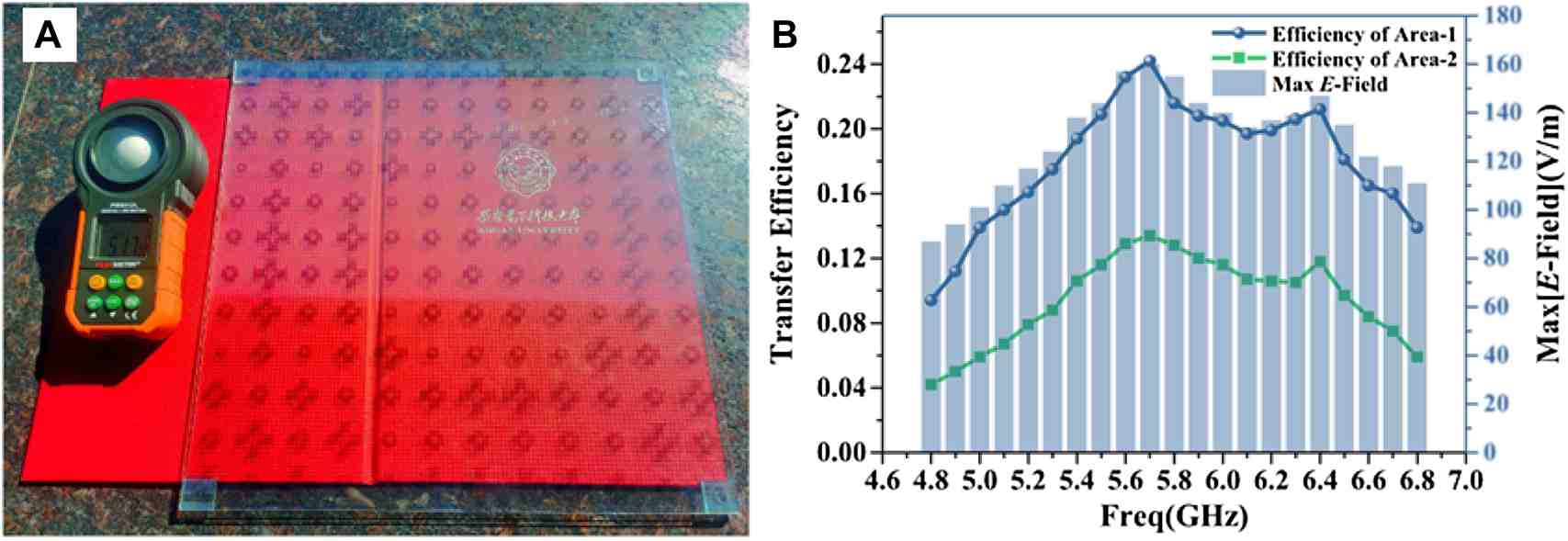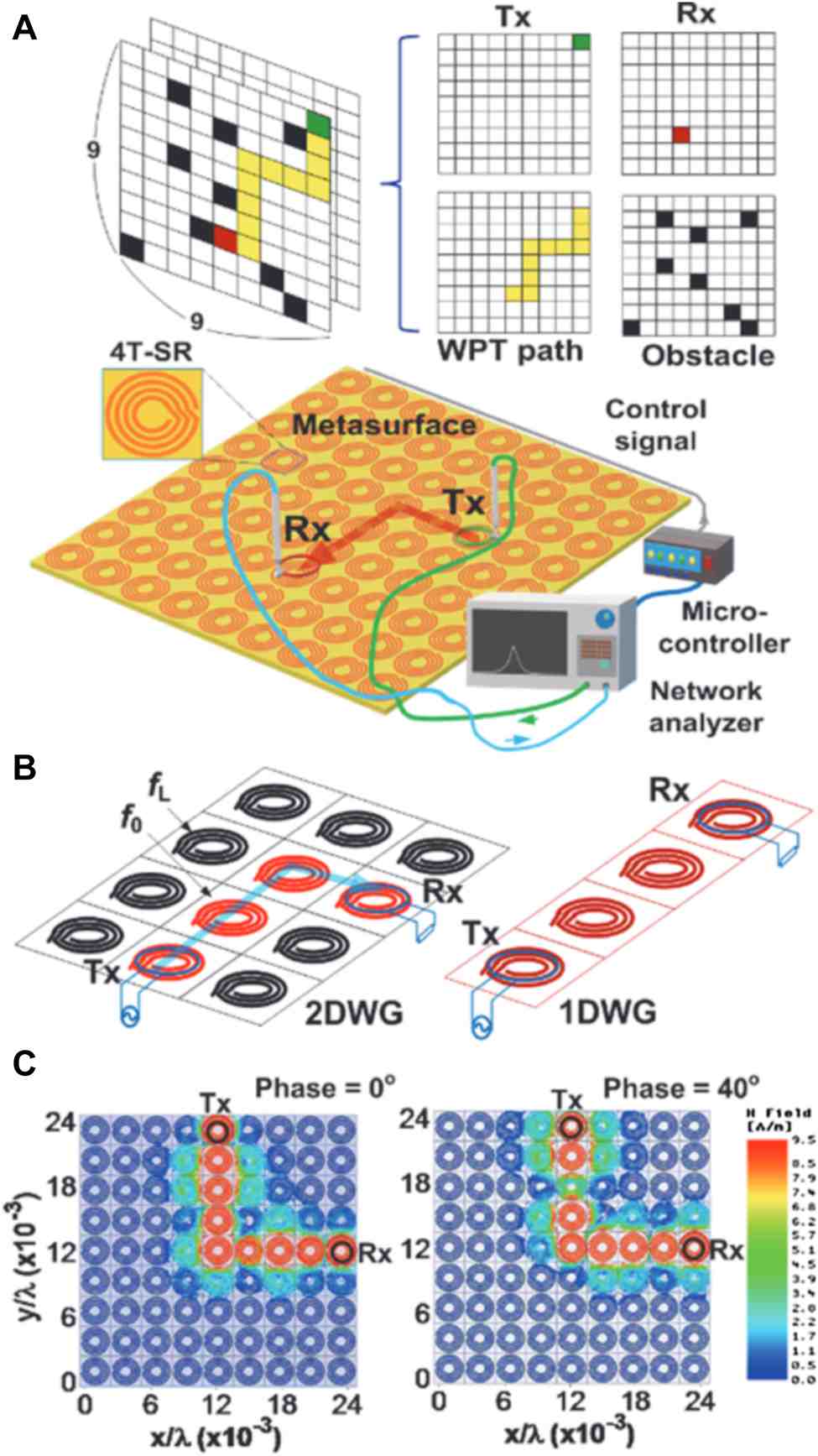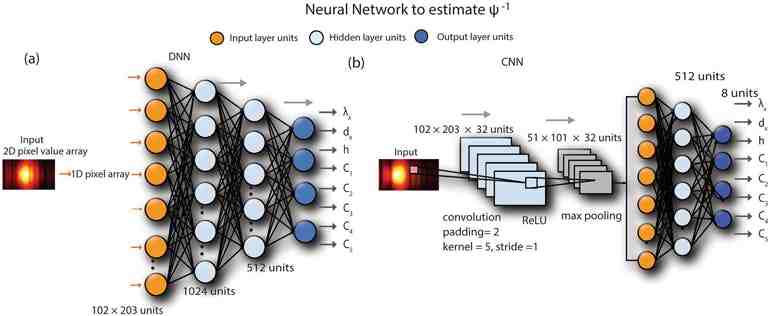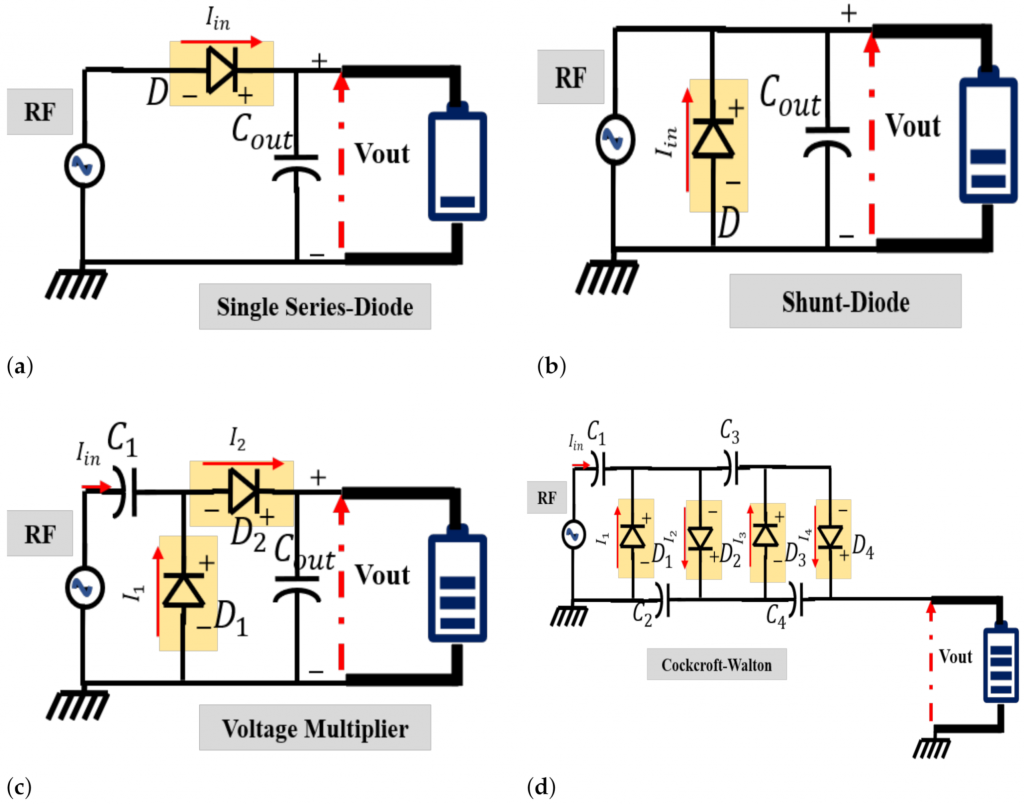Power harvesting, with its many manifestations, is often an attractive and viable solution for providing low levels of operational DC power over the long term. Harvesting RF energy is especially appealing as this energy is pervasive, while capturing it does not incur any noticeable negative impact on intended users – it really “goes to waste”. Also, unlike many (but not all) fixed-site solar, vibration, or thermal collection installations, most RF collection arrangements can be movable to keep up with the system they are powering.
The key to using ambient RF energy as a harvesting source is the energy collector. It acts as a transducer to capture electromagnetic energy and transform it into useful electrical energy and power in the form of voltage and current. While a regular antenna can be used for this function – after all, that’s what an antenna does – the capture efficiency is quite low and generally insufficient unless a fairly large, resonant antenna is used.
Metasurface-Based Antenna
Contents
Addressing this challenge, a team at the University of South Florida has developed a metasurface-based antenna that meets a self-declared utility “threshold” of delivering 100 µW of energy from its 16×16 cm surface. With their delivered energy level of 0.4 µW per square centimeter – roughly the intensity of radio waves at 100 meters from a cell tower – they were able to capture and use this energy in real time to power a small LED.
“With the huge explosion in radio wave-based technologies, there will be a lot of electromagnetic emissions from waste that can be collected,” said associate professor of physics and research team leader Jiangfeng Zhou. “This, combined with advances in metamaterials, created an enabling environment for new devices and applications that could benefit from harvesting this waste energy and putting it to use.”
The team used a harvesting device based on a metamaterial perfect absorber (MPA) with Schottky diodes embedded as a rectena (rectifier antenna) to convert the captured RF waves into DC energy. The Fabry-Perot (FP) cavity resonance of the MPA greatly improves the amount of energy captured. In addition, FP resonance exhibits a high Q factor and significantly increases the voltage across Schottky diodes, which improves rectification efficiency, particularly at low intensity.
“We also placed a cell phone very close to the antenna during a call and it captured enough energy to power an LED during the call,” Zhou said. “While it was more practical to collect energy from cell phone towers, it demonstrated the antenna’s energy-harvesting abilities.”
Electromagnetic (EM) metamaterials are man-made resonant metallic structures, typically arranged periodically, that behave as homogeneous media with effective electrical permittivity (ε) and effective magnetic permeability (μ). These two values can be designed to provide unique EM properties that do not exist in nature, such as a negative refractive index, unbounded diffraction optical imaging, EM invisibility cloaking, and perfect absorption.
Metamaterials also provide the flexibility needed to design electrically small, low-profile antennas. In addition, the ability to manipulate their electrical permittivity and magnetic permeability further provides the ability to match the input/output impedance of the antennas with that of the surrounding environment for optimal power transfer.
Leveraging the Metamaterial Perfect Absorber

In this design, the designed MPA helps to more efficiently convert RF waves into DC energy by perfectly capturing and storing the energy of RF waves within the Fabry-Perot meta-cavity. The MPA-based recten consists of a 4×4 array of double gap split ring resonators (SRRs) and a copper ground plane (not shown) of the same size, separated by a distance (s) (Fig. 1). ).
The sample was fabricated on a copper-clad FR4 circuit board (dielectric constant ε = 4.34) using lithography followed by etching. A Schottky diode (Skyworks SMS-7630-079LF) was soldered across a gap of each SRR to create a DC voltage by rectifying the resonant current excited by the incident RF wave. The rows of SRRs are connected by means of copper strips along the x direction, thus forming a series connection of four effective “batteries”.
Four rows of SRRs are connected through two thicker strips at the left and right ends, forming a parallel connection along the y-direction. The polarities of the diodes alternate in adjacent rows and columns to create the correct “battery” polarities effective in series and parallel connections. The alternating array of diodes also helps to collect the forward and reverse currents induced by the positive and negative half-cycles of the incident RF wave, respectively.
The team performed 3D full-wave simulations to solve Maxwell’s equations and obtain numerical solutions via Computer Simulation Technology (CST) Microwave Studio using a finite integration technology.
Tests and Results

The tests were performed in an anechoic chamber located at The MITER Corp. (Bedford, Mass.), with the recten sample connected to a 1 kΩ load as a proxy for a functional load (Fig. 2).
A calibrated and fully controllable signal was transmitted by a horn antenna at normal incidence to the rectena sample, which was placed about 380 cm away from the transmitting antenna. A metal ground plane was placed behind the sample to create a Fabry-Perot cavity to increase the amount of RF radiation captured. All instruments were controlled by a LabVIEW program and the measurement was automated by sweeping both the power and frequency of an incident RF wave.
The team performed performance and efficiency tests on a variety of parameter values. They first measured the sample for relatively high intensities of incident RF waves (Fig. 3).
The intensity range of 2.6 μm/cm2 to 65 μm/cm2 is well above what would normally be expected from ambient RF signals. It would likely only be found near (<25 m) a strong RF source such as a cell phone tower or immediately near a weak RF source.
With or without the ground plane, the maximum energy harvesting efficiency occurs at 0.90 GHz, which is comparable to the frequency predicted by the absorption cross section. Without the ground plane, the SRR array achieves the highest efficiency of ∼60% at 0.90 GHz when the intensity of the incident RF wave reaches 65 μm/cm2.
However, when the ground plane was placed at the optimal distance (s = 4 cm), the energy harvesting efficiency improves considerably and reaches the highest efficiency of ∼140%. (Yes, it is possible: efficiency above 100% indicates that the ground plane has caused the effective area of the rectena to become significantly larger than its physical area.)
They also evaluated efficiency at intensities comparable to what can be found from environmental sources (up to 1.0 μW/cm2) (Fig. 4). These intensity levels were chosen to match those found on the streets of urban environments, such as a GSM cell phone (< 1.930 μW/cm2 at 900 MHz and < 6.40 μW/cm2 at 1800 MHz) and 3G (< 2, 4 μW/cm2 at 2110 MHz). Efficiency here is clearly much lower than it was for high power measurements. However, the presence of the ground plane increases efficiency by a large factor (up to 16) in this case.
Conclusions

The team concluded that designing RF collection rectenes based on perfect metamaterial absorbers is a promising solution for collecting ambient RF energy in low energy density environments because they are tunable, highly efficient, and electrically small.
The perfect absorption design of the metamaterial rectena dramatically improves RF-dc conversion efficiency (especially for the lowest available power densities) by increasing the effective antenna area. This eliminates reflection due to impedance mismatch and helps overcome high resistance below the trigger threshold.
The current version of the antenna is much larger than most devices it would potentially power, so researchers are working on making it smaller. They would also like to make a version that could collect energy from multiple types of radio waves simultaneously so that more energy could be collected.
His research, which was funded by the Asian Office of Aerospace Research and Development and the Alfred P. Sloan Foundation, is detailed in a crisp, highly readable nine-page paper “Harvesting High Efficiency Ambient RF Energy by a Perfect Metamaterial Absorber ”, published in Optical Materials Express. Surprisingly, there is no supplementary material or video accompanying the article.


